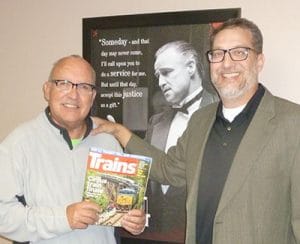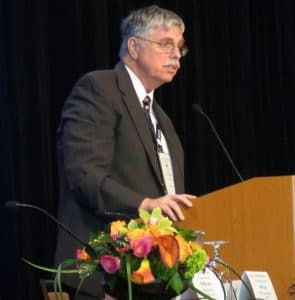The National Transportation Safety Board (NTSB) ruled last month on the probable cause of a fatal accident in June 2017 that killed both a CSX conductor and a conductor trainee.
The men were struck from behind at 11:18 p.m. June 27, 2017, by an Amtrak train while walking to the cab of their train in Ivy City, a neighborhood in Washington, D.C.
The men had just completed a railcar inspection.
The NTSB report, released April 9, stated that there had been no rail traffic for about an hour on the active tracks upon which the men were walking as they returned.
As they walked, a pair of Amtrak trains, one northbound and one southbound, approached the men, the report stated.
NTSB said the northbound Amtrak train approached the men from the front on tracks to the left of those upon which they were walking, and that both trains sounded their horns and bells at virtually the same time in attempts to alert them.
“Given the simultaneous and similar horn and bell sounds from the two trains, the conductors may not have discerned two sources of the sounds and, consequently, concluded that the sounds originated from only one train — the one that they had detected ahead of them.
“As a result, it appears the conductors were unaware that a second train was approaching them from behind,” the report stated.
NTSB issued a new safety recommendation to the two carriers involved in the accident at the conclusion of its report:
“Prohibit employees from fouling adjacent tracks of another railroad unless the employees are provided protection from trains and/or equipment on the adjacent tracks by means of communication between the two railroads.”
Read the full NTSB report here.
Tag: Amtrak
Amtrak as we know it is in the budget crosshairs again, and if proposed cuts go through, it could have a lasting effect on not only our nation’s communities, but Railroad Retirement benefits as well.
President Donald Trump’s budget request proposes a $1.06 billion reduction in funding to Amtrak. Service to rural and mid-sized city destinations would be drastically affected with the adoption of this plan, and 15 routes classified as long distance could eventually lose federal funding due to a change in how funds are allocated.
“We hope that, like last year, this budget is a non-starter,” said Jim Mathews, president and CEO of the Rail Passengers Association (RPA). “But we note with some concern that this time around, the administration appears to be getting a little smarter in its approach — and that approach could yet endanger our trains.”
Rather than cutting the routes outright, as has been proposed in previous Trump budgets, the 2020 plan would shift the money available to fund long-distance routes from Amtrak’s annual outlay to a competitive process. Over a four-year period, the administration would choose the routes that received funds with states applying for funding through the Restoration & Enhancement grant program.
“The Trump Administration seems to be taking a page from anti-long-distance factions in Washington, looking to pit National Network services against the Northeast Corridor. And by moving it to a competitive grant program — controlled by the White House — the administration gets to choose the winners and losers,” Mathews said.
The plan doesn’t sit well with the RPA’s Mathews, and it shouldn’t sit well with SMART Transportation Division rail members. Reducing Amtrak’s long-distance service will result in fewer people at work for the carrier. Fewer people working for the carrier means fewer railroaders paying into Railroad Retirement — a Railroad Retirement Board analysis of Trump’s 2018 budget proposal that would have cut Amtrak’s long-distance routes said an estimated 10,000 rail jobs would go away with the routes’ elimination.
For long-distance rail service to continue, the 2020 budget document suggests that the 23 states that the routes run through begin footing the bill rather than the federal government, which handed many corporations a major tax reduction at the end of 2017.
“In 2020, the Department of Transportation, Amtrak, states, and affected local Governments will collaborate to rationalize the Long Distance network to more efficiently serve modern market needs as a series of shorter-distance, high-performing corridor services where passenger rail as a transportation options (sic) makes sense,” the 2020 budget proposal states on page 78.
The budget goes on to say that “low population areas along the routes will be better served by other modes of transportation, like intercity buses.
“Over time, Federal support for Amtrak would be significantly reduced as Amtrak is able to right-size its network and States play a larger role, as they do now for State-supported and Northeast Corridor services,” the budget proposal concludes.
Hoosier State on the brink
But what happens to smaller places like Indiana, where routes are already in jeopardy?
Mayor Dennis Buckley’s city of Beech Grove is home to one of three Amtrak repair facilities nationwide. The Indianapolis-area shop employs approximately 525 workers and is served by Amtrak’s Hoosier State line that transports passengers from Indianapolis to Chicago as well as Amtrak cars to the Beech Grove facility for repairs.
The state’s Legislature and the governor are looking to defund the route, Buckley said, and he finds himself having to fight for the jobs created by both Amtrak and by the businesses that have sprung up around the repair facility in his city of almost 15,000 people.
In a letter to state legislators urging them to support the route, Buckley said that Amtrak brings $100 million to the economy of central Indiana and Beech Grove’s Marion County.
“Amtrak must also become more competitive in the business of local mass transit,” Buckley said, but eliminating the four-stop, 196-mile route would be a severe blow to his community.
“Budgets should be set up to continually fund the Hoosier State line for years to come,” Buckley wrote to legislators, “I certainly recommend that the State of Indiana invests in our future. Our livelihood depends on it.”
As part of his effort, Buckley has reached out to Indianapolis media outlets. He would welcome it if SMART TD members who are Indiana residents talk to their legislators and state Gov. Eric Holcomb about maintaining the route’s funding.
Repeat performance
The targeting of Amtrak’s long-distance routes is not new.
In addition to the administration’s yearly call to eliminate long-distance service, there was a battle waged last year over the Southwest Chief. Amtrak leadership had sought to replace portions of the route between Dodge City, Kan., to Albuquerque, N.M., with bus shuttles because of a lack of Positive Train Control (PTC) technology.
Communities on the Chicago-to-Los Angeles daily route mobilized, and the activism of workers, passenger rail advocates, politicians and others preserved the route’s funding and operation as-is through 2019.
Similar action might be needed yet again to prevent any proposed harmful cuts to Amtrak’s long-distance routes as the federal budgeting process continues. SMART Transportation Division will keep members apprised.
To find out who represents you in Congress, visit the SMART TD Legislative Action Center.
National passenger carrier Amtrak released its 2018 Host Railroad Report Card, which grades six of the Class I freight host railroads based on delays caused to Amtrak trains over the last 12 months.
The grades ranged from A to F, with Canadian Pacific being the lone recipient of an “A.” Norfolk Southern got an “F.”
All told, Amtrak averaged the overall performance of the Class I host railroads at a “C.”
Eleven of 28 Amtrak state-hosted routes achieved 80 percent on-time performance (within 15 minutes of scheduled departure), according to the report card.
Conversely, only one of the 15 long-distance routes, the “Auto Train,” had on-time performance of more than 70 percent, Amtrak said.
See the full report card (PDF) by following this link.
Amtrak announced today that former President and CEO Joseph Boardman, 70, died today after having a stroke March 5:
“We are deeply saddened to learn of the passing of Joe Boardman.”
“Joe, during his tenure as FRA administrator, Amtrak board member and Amtrak president & CEO, was a tireless advocate for passenger rail and the nation’s mobility. During his eight years at the helm, Joe helped the company make significant progress in reducing our debt, improving our infrastructure and raising our cost recovery performance.”
“He leaves a lasting legacy that includes public service and making passenger rail transportation better for millions of people.”
Click here to read tributes from Trains Magazine and Railway Age.
Relatives and friends may call at the Barry Funeral Home, 807 W. Chestnut St., Rome, NY 13440 on Thursday, March 14 from 2 to 4 p.m. and from 6 to 8 p.m. A Mass of Christian Burial will take place at 11 a.m. on Friday, March 15 at St. Paul’s Church, 1807 Bedford St., Rome, NY 13440. Interment will be at St. Patrick’s Cemetery, Route 285, Taberg, NY 13471 and will take place in the spring.
In lieu of flowers, contributions may be made in Boardman’s memory to Unity Acres, 2290 County Route 2, P.O. Box 153, Orwell, NY 13426; Health Friends, 1119 Elm St., Utica, NY 13501; or to the Epilepsy Foundation.
To read Boardman’s official obituary or to leave condolences, click here.
A number of candidates to transportation-related oversight posts in the federal government whose nominations were returned to President Donald Trump in early January have been renominated to those posts.
Thelma Drake has been renominated to be the administrator of the DOT’s Federal Transit Administration (FTA) and Lynn Westmoreland, Joseph Gruters and Rick Dearborn are again under consideration for positions on the Amtrak board of directors.
SMART Transportation Division opposes the nomination of Westmoreland, whose voting record as a U.S. representative shows he has a long history of voting against Amtrak funding.
“As a longtime member of the House Transportation and Infrastructure Subcommittee on Railroads, Pipelines, and Hazardous Materials, Westmoreland has a hostile voting record against Amtrak, which includes efforts to eliminate federal funding for Amtrak entirely. In addition, Westmoreland has been an original cosponsor of the ‘National Right-to-Work Act’ on multiple occasions, which would significantly weaken our ability to collectively bargain. For these reasons, we oppose his nomination as it would undermine the core mission of Amtrak and its employees,” we reported when his nomination was initially introduced in October 2017.
Also renominated by the president are Michelle Schultz to the Surface Transportation Board (STB), and Michael Graham and Jennifer Homendy to the National Transportation Safety Board (NTSB). Homendy is currently serving a term on the board that runs out at the end of 2019.
Two nominations also were made to highway oversight positions — Heidi King to administer the National Highway Safety Administration (NHTSA) and Nicole Nason to administer the Federal Highway Administration (FHA).
These nominations will be considered by U.S. Senate subcommittees before potential advancement for consideration by the full Senate.
A feed company whose truck rolled down a hill and crashed into railroad tracks in Cimarron, Kan., in March 2016 has admitted fault and avoided a trial on the matter.

Amtrak’s Southwest Chief derailed on those same tracks about 15 hours later, and 28 people aboard the Los Angeles-to-Chicago train were hurt.
The Associated Press reported that Cimarron Crossing Feeders said in a court filing that an employee was negligent in not setting the truck’s brake, allowing it to roll.
The National Transportation Safety Board determined last November that the probable cause of the derailment was that driver’s failure to properly secure his unattended truck, which struck the BNSF railroad tracks and caused them to misalign.
NTSB also ruled the failure of the truck’s driver and his supervisor to report the incident to local authorities was a contributing cause in the accident.
During a Senate Commerce, Science and Transportation committee hearing on the implementation of positive train control (PTC) among U.S. railroads Oct. 3, an Amtrak executive said that the carrier plans to continue operating the Southwest Chief passenger route through at least the 2019 fiscal year.
Amtrak Vice President and Chief Operating Officer Scot Naparstek told U.S. Sen. Tom Udall (D) of New Mexico that the route, which various reports had said would get a 500-mile “bus bridge” from Dodge City, Kan., to Albuquerque, N.M., to avoid non-PTC trackage, would be operated as usual once the Dec. 31, 2018, PTC deadline passes.
Senators representing areas with stops on the route, including Udall, as well as rail passenger advocacy groups had been fighting this option.
“We plan on running the Southwest Chief as-is through fiscal year 2019. We are well aware of the Senate’s directive,” Naparstek said. “We await Congress’s dealing with the Southwest Chief during the (budget) conference as well as in the fiscal spending bill.”
The president of the Rail Passengers Association was pleased with the outcome.
“This is a huge win for our association, for passengers, and for the states that rely on the Southwest Chief,” said Rail Passengers Association President Jim Mathews. “It shows that advocacy works, and I want to thank every person who took part in our campaign in defense of the national network. Now, we need to take that energy and turn it towards the coming reauthorization where we can make a positive vision for passenger rail in the U.S.: fast and frequent trains, 21st century equipment, and on-time service that passengers can count on.”
The Southwest Chief runs daily from Chicago to Los Angeles.
The public and members of Congress have been vocal in their displeasure with Amtrak’s announcements of cuts and planned cuts to service, including replacement of dining car service with boxed lunches on some routes, de-staffing 15 train stations around the country that serve less than 40 passengers per day and a proposal to substitute parts of the Southwest Chief train route with bus service.
Hot meals a thing of the past on select routes
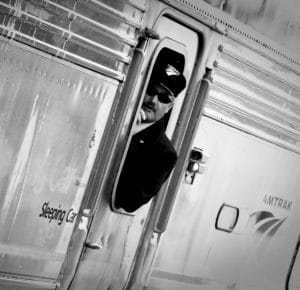
Julie King, executive director of the National Railroad Hall of Fame and the American Association of Private Railroad Car Owners, has expressed concern that the changes will dissuade customers from riding on trains.
“When you’re on a very long train trip, the equivalent of a boxed lunch is not going to enhance your experience,” King said. “The lack of train attendants has the same impact. It makes it difficult for people to get their questions answered and get tickets.”
De-staffing stations
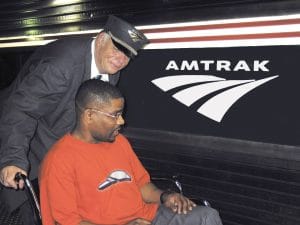
The staff cuts also have gotten the attention of senators. Ohio Sens. Rob Portman (R) and Sherrod Brown (D) have introduced an amendment to H.R. 6147, the 2019 fiscal transportation legislation, as a result of the de-staffing. If passed, the amendment would require Amtrak to staff any station that has averaged at least 25 passengers per day in the last five years.
“The services Amtrak staff provide are important to all passengers … but this is particularly true for elderly and disabled individuals who may have to carry baggage down to the train platform unassisted, often late at night,” Portman said.
Southwest Chief: train to bus service?
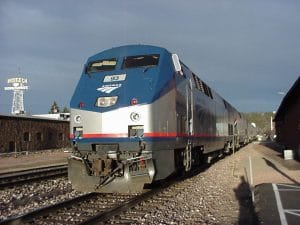
“The proposal would leave a 500-mile gap in the rail network, it would displace thousands of riders from the train and is projected to lose as much as 70 percent of current revenue generated,” the RPA said.
The RPA has started a petition on its website, www.railpassengers.org, in the hopes that Amtrak will reconsider its proposals.
SMART TD Colorado State Legislative Director Carl Smith said he is dismayed at the potential loss of jobs and the hardships that current passengers will face if Amtrak has its way.
“The Southwest Chief is critical infrastructure to sustaining good jobs in rural areas as well as providing passenger transportation to under-served areas that do not have ready access to other forms of travel to larger metropolitan areas,” Smith said.
The Texas Eagle Marketing and Performance Organization (TEMPO), which was created in the 1990s when Amtrak was looking to discontinue service on the Texas Eagle, a line that stops in Chicago; San Antonio; Fort Worth, Texas; and Los Angeles, has also been outspoken about the changes Amtrak is proposing.
“Over the years we’ve had to battle with Congress to fund these trains, but now it seems the battle is with Amtrak itself,” said TEMPO’s Dr. William Pollard after hearing about Amtrak’s planned cuts.
Members of Congress expressed their concern after Amtrak’s CEO Richard Anderson announced that he plans to renege on deals with affected states Amtrak had made under then-CEO Joe Boardman to keep the Southwest Chief running.
In a bipartisan letter to Amtrak’s Anderson, U.S. Sens. Marin Heinrich (D – N.M.), Tom Udall (D – N.M.), Michael Bennet (D – Colo.), Richard Durbin (D – Ill.), Tammy Duckworth (D – Ill), Dianne Feinstein (D – Calif.), Kamala Harris (D – Calif.), Pat Roberts (R – Kan.), Jerry Moran (R – Kan.) and Cory Gardner (R – Colo.) wrote: “The potential suspension of rail service has raised serious concerns among our constituents who depend on the Southwest Chief. We strongly disagree with such a decision and urge you to uphold Amtrak’s commitment to intercity rail service across the entire national network, particularly through our rural communities.”
The Senate has since passed an amendment to the chamber’s fiscal 2019 transportation legislation to force Amtrak to keep running its long-distance routes. Amendment No. 3414 of the funding bill H.R. 6147 says, “It is the sense of Congress that 1) long distance routes provide much needed transportation access to millions of riders in 325 communities in 40 states, and are particularly important in rural areas; and 2) long distance passenger rail routes and services should be sustained to ensure connectivity throughout the national network.”
That amendment passed, 95 to 4. The clear objective of the amendment is to tell Amtrak that it cannot be the sole decision-maker in the decision to scrap portions of the national network.
“Now, more than ever, we need a ‘national’ rail system. It’s sad that we need the representatives and senators of the people to mandate the CEO of Amtrak to continue to operate a national system instead of dismantling it,” said Dirk Sampson, general chairperson of Amtrak GO 769.
On the one-year anniversary of the shooting of Amtrak conductor Michael Case in Naperville, Ill., U.S. Sen. Tammy Duckworth (D – Ill.) introduced S. 2861 — The Passenger Rail Crew Protection Parity Act — a bill that would make it a felony to assault or intimidate passenger rail crewmembers. U.S. Sen. John Hoeven (R – N.D.) has signed on as a co-sponsor of the bill.
“The senseless shooting in 2017 of Michael Case, a SMART TD brother out of Local 1525, that inspired the senators to craft this bill is just one example of the crime against rail crewmembers that happens all too often,” SMART TD President John Previsich said. “Making such incidents felony-level offenses throughout the U.S. would be a step in making our nation’s rails a safer place to work and travel.”
Case spent 10 weeks in the hospital after being shot May 16, 2017, and his shooting is one of 73 recorded cases of assault on Amtrak employees since 2015. A year later, Case said he is still recovering.
“I am working very hard to get my strength, flexibility, endurance and mental health back to 100 percent. I have my struggles, but I count my blessings that I am alive,” Case said. “My family has been through a lot this past year — we look forward to better days ahead!”
Case’s shooting, as well as other incidences of assault, inspired Duckworth to propose the legislation.
“No one in America should experience what Amtrak conductor Michael Case endured while just doing his job. We are all entitled to work in a safe environment, one that is free from violence, harassment and intimidation,” Duckworth said in a press release.
If passed, the bill would provide the same protections to passenger rail personnel as airline crewmembers. Currently, any assault on a rail crewmember falls under the laws of the local jurisdiction where the crime occurs, leading to an inequality in justice for assault victims. This legislation levels the playing field, and victims can expect to receive the same justice, no matter where the crime happens, if the bill becomes law.
“This bipartisan legislation is welcomed and overdue,” Previsich said. “SMART Transportation Division applauds Sen. Duckworth’s and Sen. Hoeven’s efforts to bring federal protections of rail workers in line with those of the airline industry. We urge members of Congress to support this bill to bring crimes against railroaders under the umbrella of federal law.”
Case also supports the bill and says it would help to protect his fellow passenger rail workers.
“I pray that my co-workers NEVER have to go through what my family and I have endured this past year!” Case said. “A safe and secure environment will allow my co-workers to focus on the task at hand — operate and administrate their equipment up and down the railroad safely.”
In a press release released by Duckworth’s office, Illinois State Legislative Director Bob Guy also lent support.
“Given the interstate nature of passenger rail, it only makes sense to provide the same federal protections that aviation employees enjoy to employees in the passenger rail industry, and that’s just what the Passenger Rail Crew Protection Parity Act would do. I want to thank Senators Duckworth and Hoeven for their commitment to rail safety and working to provide our members the federal protections they deserve,” he said.
S. 2861 has been referred to the U.S. Senate Committee Commerce, Science and Transportation Committee, of which Duckworth is a member.
